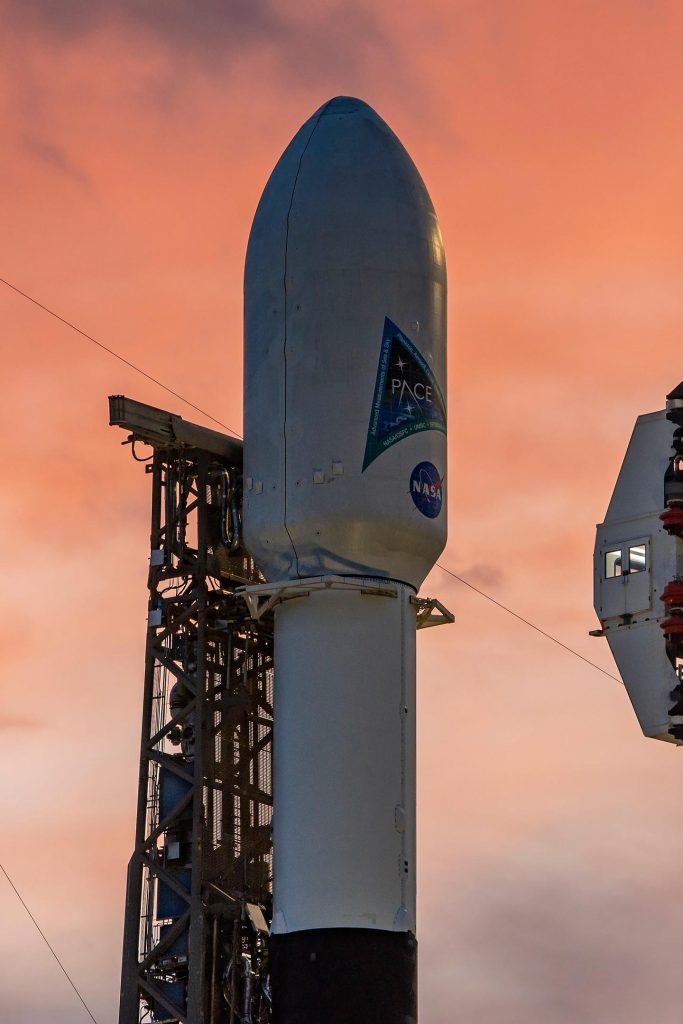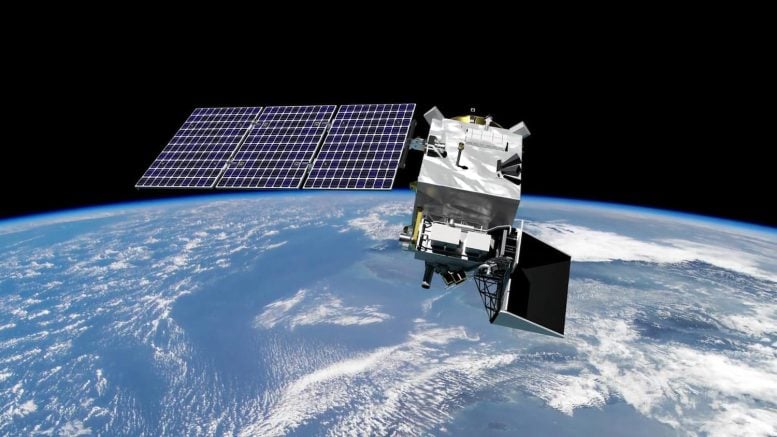
A SpaceX Falcon 9 rocket with NASA’s PACE (Plankton, Aerosol, Cloud, ocean Ecosystem) spacecraft stands vertical at Space Launch Complex 40 at Cape Canaveral Space Force Station in Florida on Monday, February 5, 2024. PACE is NASA’s newest earth-observing satellite that will help increase our understanding of Earth’s oceans, atmosphere, and climate by delivering hyperspectral observations of microscopic marine organisms called phytoplankton as well new data on clouds and aerosols. Credit: SpaceX
NASA and SpaceX are standing down from the Wednesday, February 7, launch of the agency’s Plankton, Aerosol, Cloud, ocean Ecosystem (PACE) mission due to ground winds preventing prelaunch checkouts. Previously, the launch was targeted for February 6, but that was scrubbed due to unfavorable weather conditions.
The team is targeting liftoff at 1:33 a.m. EST on Thursday, February 8, on a SpaceX Falcon 9 rocket from Space Launch Complex 40 at Cape Canaveral Space Force Station in Florida.
The satellite and rocket remain healthy and ready for launch.
Live launch coverage will begin on NASA+ and NASA TV public channel at 12:45 a.m. EST on February 8.

NASA’s PACE (Plankton, Aerosol, Cloud, ocean Ecosystem) spacecraft in orbit over Earth. Credit: NASA GSFC
The Plankton, Aerosol, Cloud, ocean Ecosystem (PACE) mission is a NASA initiative designed to advance our understanding of Earth’s ocean and atmosphere interactions. The mission’s primary objective is to monitor global ocean color, aerosols, clouds, and the marine ecosystem from space. By employing a highly advanced set of instruments, including a wide-spectral range ocean color sensor, PACE will enable scientists to study the diversity of phytoplankton in the ocean. These tiny plant-like organisms are foundational to the ocean food web and play a crucial role in carbon cycling and the Earth’s climate.
PACE aims to provide unprecedented insights into ocean ecological dynamics, air quality, and cloud interactions with aerosols, all of which are critical to improving our understanding of Earth’s climate system and environmental health. The data collected will support a variety of applications, including climate research, air quality forecasting, and the management of coastal and ocean resources. By enhancing our knowledge of the Earth’s oceans and atmosphere, the PACE mission seeks to contribute significantly to environmental preservation and the sustainability of our planet.









Be the first to comment on "NASA’s PACE Mission Faces Another Launch Delay Due to Weather Challenges"